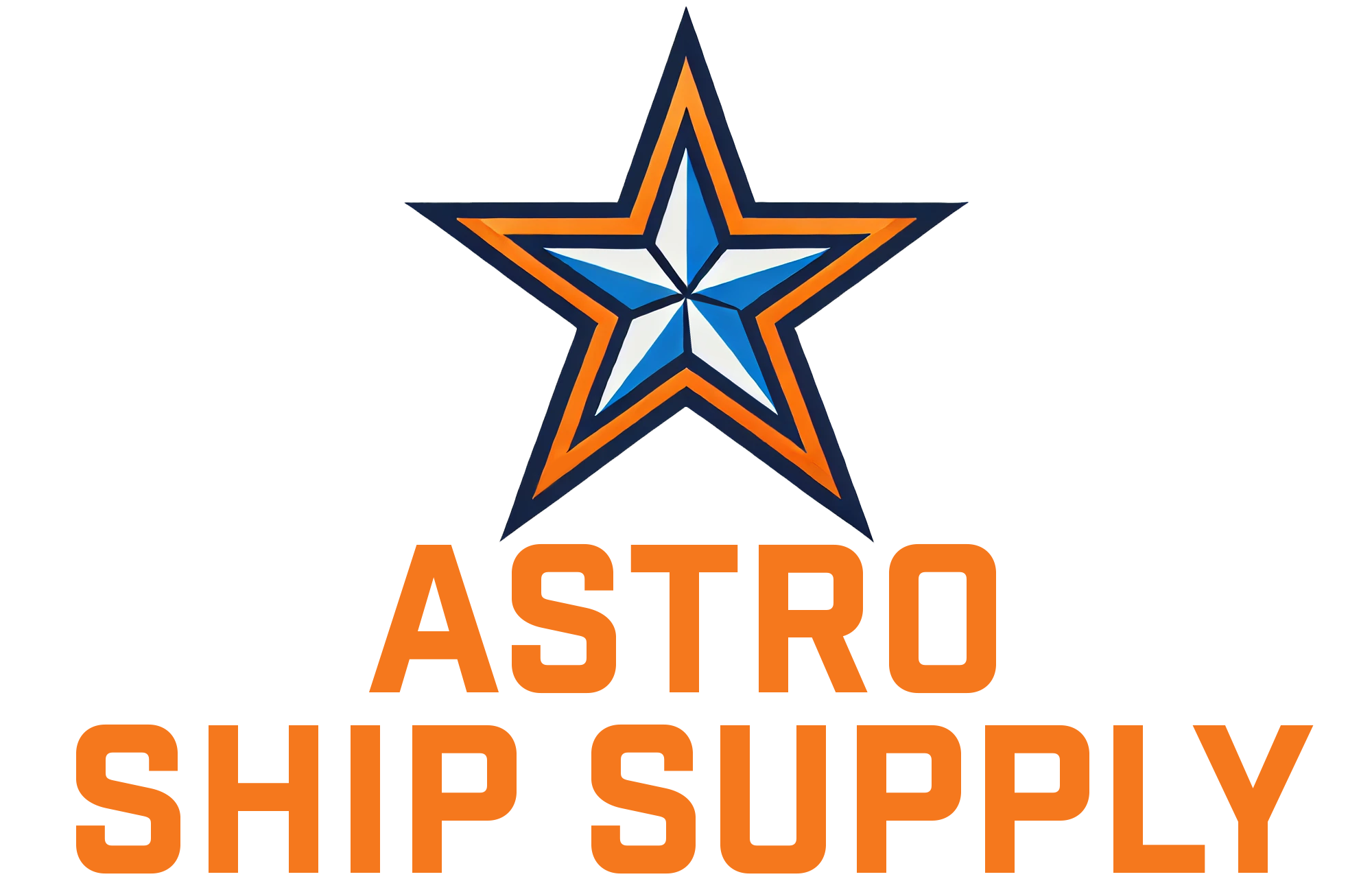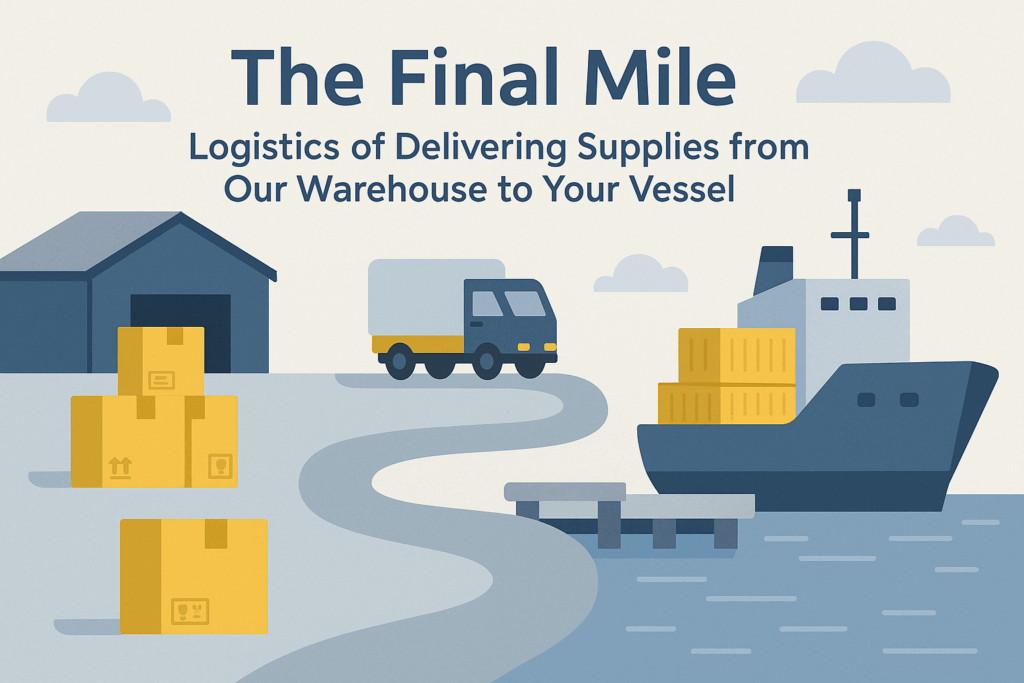At Astro Ship Supply, we understand the intricacies of maritime logistics in the Gulf Coast region. We’ve witnessed firsthand how a well-planned supply strategy can make all the difference, especially when faced with the unique demands of seasonal changes like hurricane season. This comprehensive guide will delve into the critical aspects of adapting your supply orders, offering actionable insights and real-world scenarios to help you navigate these shifts with confidence.
Understanding the Impact of Seasonal Changes on Maritime Supply Chains
Seasonal variations present a multifaceted challenge for ship chandlers and vessel operators alike. These challenges can range from predictable weather patterns to less obvious shifts in market availability and pricing. Recognizing these impacts is the first step toward effective mitigation.
Weather Phenomena: More Than Just Rough Seas
While storms and hurricanes are the most dramatic examples, other seasonal weather patterns can significantly disrupt supply lines:
- Hurricane Season (June 1 – November 30 in the Atlantic): This period is arguably the most critical for vessels operating in or transiting through the Gulf Coast. Ports can close, shipping lanes become hazardous, and land-based transportation networks can be severely impacted. This directly affects the availability and delivery timelines of provisions, spare parts, and other essential supplies.
- Winter Storms: Colder months can bring ice, snow, and freezing rain, affecting port operations and inland logistics, particularly for vessels in northern waters or those receiving supplies from colder regions.
- Fog and Visibility Issues: Certain seasons bring increased fog, leading to delays in port entries and exits, and subsequently, supply deliveries.
- Monsoon Seasons: For vessels operating in specific international waters, monsoon seasons bring heavy rains and strong winds, creating similar logistical hurdles to hurricane season.
Market Fluctuations and Demand Shifts
Beyond weather, seasonal changes influence supply and demand dynamics:
- Agricultural Cycles: The availability and pricing of fresh produce (fruits, vegetables) are directly tied to harvest seasons. Understanding these cycles can help optimize orders and ensure freshness.
- Holiday Seasons: Major holidays (e.g., Thanksgiving, Christmas, Lunar New Year) can lead to increased demand, reduced labor availability, and higher transportation costs, impacting supply chains globally.
- Fishing Seasons: The availability of certain seafood items will fluctuate with fishing seasons, affecting both supply and price.
Logistical Bottlenecks and Port Congestion
Predictable peak seasons or unexpected weather events can lead to:
- Port Closures and Delays: The most immediate impact of severe weather. Vessels may be rerouted, unable to offload/onboard supplies, or face significant delays.
- Trucking and Land Transportation Issues: Even if a port is open, damaged infrastructure or hazardous road conditions inland can prevent supplies from reaching the vessel.
- Increased Lead Times: During periods of high demand or disruption, standard delivery times can extend significantly.
Proactive Strategies for Adapting Your Supply Orders
Successful adaptation hinges on foresight, flexibility, and strong partnerships. Here are key strategies to implement:
1. Advance Planning and Forecasting: The Cornerstone of Preparedness
Seasonal Calendar Integration
Develop a comprehensive calendar that maps out known seasonal events relevant to your vessel’s operational areas. This includes hurricane seasons, major holidays, agricultural cycles, and even local events that might impact port traffic or road accessibility.
Historical Data Analysis
Review past supply orders in relation to seasonal events. Were there specific items that became scarce? Did prices spike? How long were delivery delays? This data provides invaluable insights for future planning.
Extended Ordering Windows
During anticipated challenging periods, place orders further in advance. Instead of a typical weekly or bi-weekly order, consider a 3-4 week supply of essential items. This is particularly crucial for non-perishable goods, spare parts, and medical supplies.
2. Strategic Inventory Management: Building Resilience Onboard
Stockpiling Essential Non-Perishables
Identify critical non-perishable items (canned goods, dried foods, long-life milk, bottled water, cleaning supplies, toiletries, basic medical supplies) and maintain a higher buffer stock, especially before and during hurricane season. This reduces reliance on immediate deliveries.
Prioritizing Critical Spare Parts
For essential machinery, identify critical spare parts that, if damaged or unavailable, could lead to significant downtime. Consider maintaining a higher inventory of these items onboard, anticipating potential supply chain disruptions.
Example: A vessel operating in the Gulf during hurricane season might carry extra engine filters, hydraulic hoses, and specific communication equipment spares, knowing that a port closure could delay resupply for weeks.
Optimizing Perishable Supply Schedules
For fresh provisions, work closely with your chandler to adjust delivery schedules. This might involve:
- Receiving larger, less frequent deliveries of fresh produce with a longer shelf life before a predicted disruption.
- Utilizing vacuum-sealed packaging or specialized storage to extend freshness.
- Focusing on hardier vegetables and fruits that can withstand longer storage.
3. Diversifying Your Supply Network: Reducing Single Points of Failure
Multiple Chandlery Partners (Where Applicable)
While establishing a strong relationship with a primary chandler like Astro Ship Supply is vital, explore having secondary options for emergency situations or specific regional needs. This diversification can be a lifeline if your primary supplier’s operations are impacted by a local event.
Exploring Alternative Transportation Routes
Understand potential alternative logistics routes if primary ports or roads become inaccessible. This might involve considering different ports for delivery, or exploring rail vs. road options where feasible, though this is often managed by the chandler.
4. Enhanced Communication and Collaboration: Your Chandlery as a Partner
Open Dialogue with Your Chandlery
Maintain constant communication with your ship chandler. Inform them of your vessel’s itinerary, any anticipated operational changes, and your specific concerns regarding seasonal impacts. A good chandler will proactively offer solutions and updates.
Astro Ship Supply Case Study: During Hurricane Laura in 2020, many vessels were caught off guard. However, clients who had maintained close communication with us received timely updates on port statuses, alternative delivery points, and had their critical orders prioritized and fulfilled either pre-storm or immediately post-storm through expedited, pre-arranged logistics.
Leveraging Chandlery Expertise
Your chandler has their finger on the pulse of regional supply chain conditions. Ask for their insights on seasonal availability, pricing trends, and potential logistical challenges. They can often recommend optimal ordering times or alternative products.
5. Financial Preparedness: Budgeting for the Unexpected
Buffer for Price Increases
Anticipate that certain items may see price increases during peak demand or supply disruptions. Factor this into your budgeting to avoid last-minute financial strain.
Emergency Fund Allocation
Consider allocating a small emergency fund specifically for expedited shipping, unforeseen diversions, or urgent procurements during crisis periods.
—
Comparative Analysis: Proactive vs. Reactive Supply Management
The difference between a smooth operation and a chaotic scramble often boils down to a proactive versus reactive approach to supply management. Let’s compare:
| Feature | Reactive Supply Management | Proactive Supply Management |
|---|---|---|
| Planning Horizon | Short-term, focused on immediate needs. | Long-term, seasonal forecasting and strategic planning. |
| Cost Impact | Higher costs due to rushed orders, expedited shipping, and premium pricing during shortages. | Optimized costs through bulk purchasing, planned orders, and avoiding emergency surcharges. |
| Crew Morale | Lower morale due to inconsistent provisions, shortages of essential items, and stress from uncertainty. | Higher morale due to consistent access to quality provisions and necessary supplies. |
| Operational Efficiency | Frequent disruptions, delays, and potential downtime due to lack of critical supplies. | Smooth operations, reduced downtime, and enhanced mission accomplishment. |
| Risk Exposure | High vulnerability to seasonal disruptions, leading to significant operational risks. | Reduced vulnerability and increased resilience against foreseen and unforeseen challenges. |
| Supplier Relationship | Transactional, often leading to less preferential treatment during high-demand periods. | Collaborative partnership, leading to prioritized service and better support during challenging times. |
As the table clearly illustrates, investing time and effort into proactive supply chain adaptation yields substantial benefits across every facet of vessel operations.
—
Example Usage Scenarios: Putting Strategy into Practice
Scenario 1: Preparing for Hurricane Season in the Gulf Coast
Vessel: Offshore Supply Vessel (OSV) operating between Houston and offshore platforms.
Challenge: Impending Hurricane Delta approaching the Gulf Coast, projected to make landfall near a key port.
Proactive Steps:
- Week 2 Before Expected Landfall: The OSV captain, in consultation with shore management, reviews the long-range weather forecast. They immediately contact Astro Ship Supply to discuss potential impacts.
- Order Adjustment: Instead of the usual weekly provision order, they place a larger order for 3-4 weeks’ worth of non-perishable food, bottled water, medical supplies, and critical engine room spares. They also request a larger-than-usual delivery of long-shelf-life fresh produce (e.g., potatoes, onions, apples).
- Early Delivery: Astro Ship Supply, aware of the impending storm, prioritizes their order, ensuring delivery is completed 5 days before the projected port closure.
- Communication Hub: Astro Ship Supply provides continuous updates on port statuses, potential alternative supply points, and road conditions, allowing the OSV to adjust its operational schedule accordingly.
- Onboard Inventory Check: Crew conducts a thorough inventory check, ensuring all emergency equipment is functional and emergency provisions are stored securely.
Outcome: The OSV maintains full operational capability and crew comfort throughout the storm, avoiding costly delays and ensuring crew well-being, while other vessels scramble for limited resources post-storm.
Scenario 2: Adapting to Holiday Season Logistics
Vessel: Bulk Carrier transiting through multiple international ports during the December holiday season.
Challenge: Reduced port staff, limited trucking availability, and increased demand for provisions due to global holidays.
Proactive Steps:
- 2 Months Prior: The vessel’s procurement officer reviews the anticipated port calls and corresponding holiday schedules. They consult with Astro Ship Supply regarding potential delays for specific provisions and technical supplies.
- Consolidated Orders: Where possible, they consolidate orders for multiple ports to reduce the number of separate transactions and potential delivery points during peak times.
- Bulk Ordering for Non-Perishables: For non-perishable items like cleaning supplies, cabin stores, and office supplies, they place a larger order to cover a longer period, reducing the need for resupply during the bottleneck.
- Flexible Delivery Windows: They communicate flexible delivery windows to Astro Ship Supply, understanding that strict deadlines might be challenging to meet during the holiday rush.
- Crew Welfare Consideration: Extra attention is given to ordering festive provisions and entertainment items, understanding that crew morale can be impacted by being away from home during holidays.
Outcome: Despite the holiday rush, the vessel experiences minimal disruption to its supply chain, ensuring crew comfort and uninterrupted operations. The proactive planning also allows for better cost control, avoiding premium charges for last-minute holiday deliveries.
—
Key Takeaways for Enhanced Supply Chain Resilience
Building a robust supply chain that can withstand seasonal shocks boils down to a few critical principles:
- Forecasting is Your Friend: Don’t just react; anticipate. Use historical data and known seasonal patterns to predict future needs and potential disruptions.
- Inventory Buffers are Non-Negotiable: For critical items, a small investment in buffer stock can prevent massive operational headaches and costs.
- Communication is King: Your relationship with your chandler is a partnership. Share information, and leverage their expertise. At Astro Ship Supply, our 24/7 support ensures you’re never out of touch.
- Diversify and Validate: While loyalty to a good chandler is valuable, knowing your options and having backup plans can be crucial in extreme circumstances.
- It’s a Marathon, Not a Sprint: Supply chain resilience is an ongoing effort, not a one-time fix. Regular review and adjustment are key.
By integrating these strategies into your vessel’s operational framework, you can transform seasonal challenges from potential crises into manageable logistical exercises. Astro Ship Supply is committed to being your partner in this endeavor, providing top-quality provisions, deck supplies, accommodation essentials, and bonded stores, ensuring your vessel is always prepared for the journey ahead, come rain or shine.
Learn more about our comprehensive Provisions & Food Supply services and how we can tailor them to your vessel’s unique needs.
Frequently Asked Questions (FAQ)
What is hurricane season and why is it important for ship supply?
Hurricane season refers to the period when tropical storms and hurricanes are most likely to form in a given region. For the Atlantic basin, this is officially from June 1st to November 30th. It’s crucial for ship supply because these severe weather events can lead to port closures, disrupted shipping lanes, damaged infrastructure, and significant delays in the delivery of provisions, spare parts, and other essential supplies. Proactive planning during this period is vital to ensure continuous operations and crew well-being.
How far in advance should I place supply orders before a predicted seasonal disruption like a hurricane?
While specific timing can vary, it is generally recommended to place orders for essential non-perishable provisions and critical spares at least 2-3 weeks in advance of a predicted major seasonal disruption or a known peak period (like a major holiday). For perishable items, coordinate closely with your chandler like Astro Ship Supply to arrange for larger, early deliveries of longer-shelf-life options to maximize onboard stock without spoilage.
What types of supplies are most affected by seasonal changes?
The supplies most affected by seasonal changes typically include fresh provisions (fruits, vegetables, certain meats and seafood due to agricultural and fishing cycles), and any items that rely on sensitive logistics (e.g., refrigerated goods, oversized equipment). During severe weather seasons, even standard dry goods, cleaning supplies, and technical spares can be impacted due to port closures and transportation disruptions. Bonded store items can also be affected by customs and port operational hours during holiday seasons.
Can Astro Ship Supply help with emergency supply needs during unexpected weather events?
Yes, Astro Ship Supply is committed to providing 24/7 support. While proactive planning is always best, we understand that emergencies happen. Our dedicated team works tirelessly to mitigate disruptions, offering expedited services, exploring alternative logistics, and leveraging our extensive supply network to meet urgent needs, even during challenging seasonal events. Maintaining open communication with us is key in these situations.
What are the benefits of maintaining higher inventory levels of non-perishables onboard?
Maintaining higher inventory levels of non-perishable goods onboard offers several benefits, especially during seasonal disruptions. It ensures crew well-being and morale by guaranteeing a consistent supply of food and essential items, even if port calls are delayed or cancelled. It reduces reliance on immediate deliveries, saving on potential expedited shipping costs. Furthermore, it enhances operational resilience, allowing the vessel to continue its mission without interruptions caused by supply shortages, and provides a buffer against unforeseen market shortages or price spikes.






